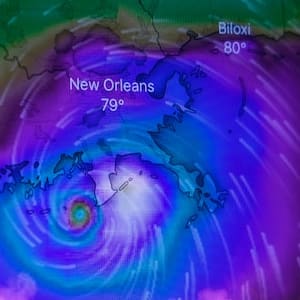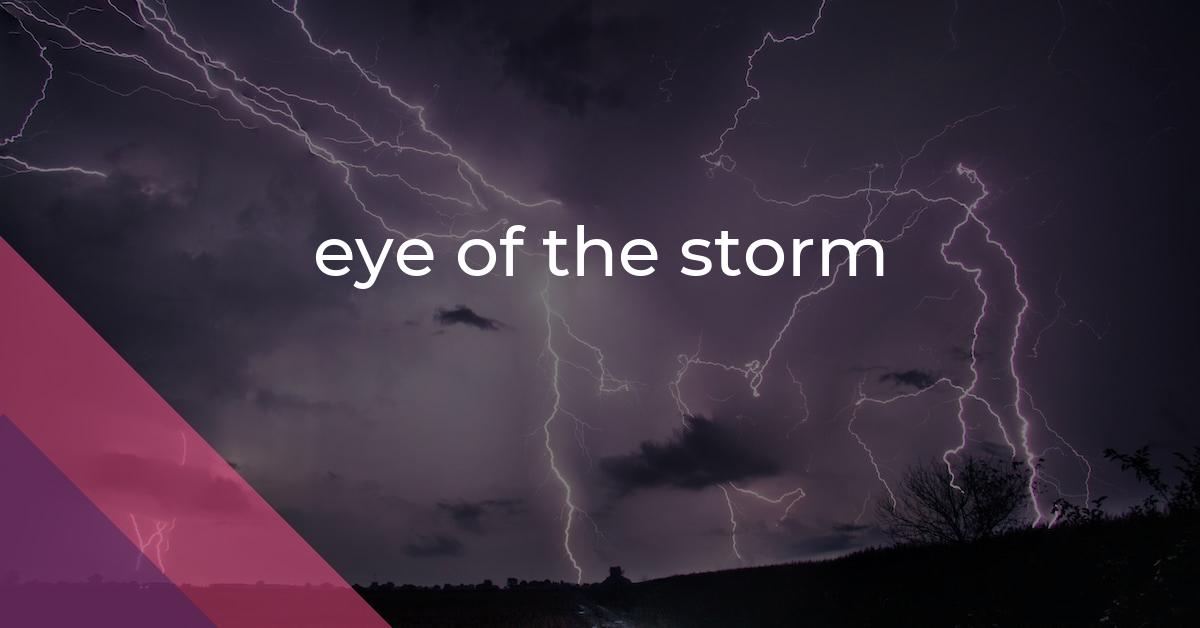eye of the storm: Idiom Meaning and Origin
What does ‘eye of the storm’ mean?
The idiom "eye of the storm" refers to a calm and peaceful moment or place, amidst a chaotic and turbulent situation.

Idiom Explorer
The idiom "stormy weather" refers to a period of difficult and turbulent times or circumstances, often related to emotional or challenging situations.
The idiom "eyes on the prize" means to keep one's focus and attention on achieving a goal or desired outcome in order to be successful.
The idiom "eye-opener" means something that is surprising or enlightening, often leading to a change in perspective or understanding.
The idiom "eye of the beholder" means that beauty or value is subjective and can vary from person to person, as different people have different perspectives and opinions.
The idiom "even keel" means to be calm and balanced, without experiencing extreme emotions or reactions.
The idiom "easy on the eye" means visually attractive or pleasing to look at.
The idiom "ear to the ground" means to be attentive and aware of what is happening or about to happen in a particular situation or context.
The idiom "dust settles" means that after a chaotic or unsettled situation, things become calm and clear. It implies that with time, the initial confusion or conflict will resolve and a resolution or understanding will be reached.
The idiom "dead of night" refers to the darkest part of the night when it is completely silent and still. It is often used to describe a time when most people are asleep and there is a sense of eerie calmness.
A "cool head" refers to someone who remains calm and rational in stressful situations. They are able to think clearly and make wise decisions, unaffected by emotions or pressure. This idiom emphasizes the importance of maintaining composure and not letting emotions override rationality.
The Calm Amidst Chaos
The idiom "calm before the storm" is closely related to the concept of the "eye of the storm." It is often used to describe a peaceful and quiet period that occurs before something chaotic or tumultuous happens. In the context of weather, it signifies a period of calm weather that comes before a storm or severe weather event.
Similarly, in a figurative sense, the "calm before the storm" can refer to a moment of tranquility or peace that precedes a turbulent or difficult situation. It suggests that there may be temporary respite or a false sense of security before a crisis or conflict arises. This idiom is commonly used in various contexts to convey the idea that challenges or difficult situations may be lurking just around the corner.
When applied to the concept of the "eye of the storm," the idiom "calm before the storm" can implicitly convey the idea that the calmness experienced in the eye of the storm is only temporary and a prelude to the storm's resume, in all its chaotic and destructive glory.
On the other hand, the idiom "stormy weather" is another phrase that is related to the "eye of the storm." It is used to describe a period of turbulent or unsettled weather conditions, often characterized by heavy rain, strong winds, and dark clouds.
In a figurative sense, "stormy weather" can be used to describe a period of difficulty, conflict, or turmoil in someone's life. It suggests that they are going through a trying or challenging time, where everything may feel chaotic, uncertain, and unstable.
When juxtaposed with the concept of the "eye of the storm," the idiom "stormy weather" can serve as a contrast, highlighting the juxtaposition between the calmness experienced in the eye of the storm and the chaos and turbulence that surrounds it. It underscores the temporary nature of the calmness and emphasizes the eventual return to a stormy and tumultuous state.
Overall, these idioms provide additional layers of meaning and context to the concept of the "eye of the storm." The idiom "calm before the storm" emphasizes the transience of the peacefulness experienced in the eye of the storm, while "stormy weather" highlights the contrast between the calm and chaos of the storm. Both idioms contribute to a deeper understanding of the metaphorical and literal implications of the "eye of the storm" in various contexts.
Example usage
Examples of how the idiom *eye of the storm* can be used in a sentence:
- She remained calm in the eye of the storm, even as chaos ensued around her.
- The CEO's decision to step down put the company in the eye of the storm as it faced intense scrutiny from the public and media.
- Despite the political controversy surrounding him, the politician maintained his composure and seemed unbothered in the eye of the storm.
More "Weather" idioms



